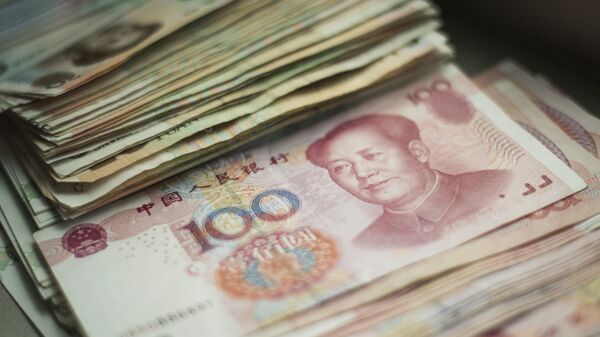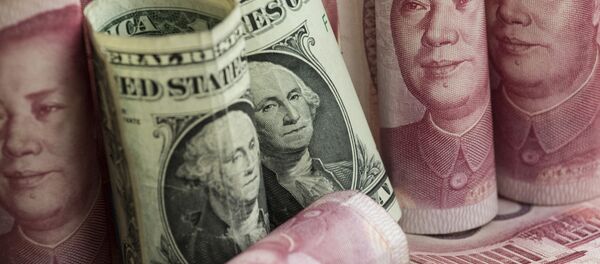Russia’s central bank has drastically reduced the share of the US dollar in its international reserves, bringing it to 34.4 percent, while at the same time boosting the shares of the euro and the renminbi to 32 percent and 14.7 percent respectively, according to a report published recently by the Bank of Russia, which discloses the data from six months earlier.
Per the latest estimates, the Chinese currency accounted for 15 percent of total holdings around the world, which is 10 percent up from the indexes as of the end of the first quarter. Russia, meanwhile, holds around 10 times more yuan than global central banks do on average, which is notably around a quarter of total world reserves in yuan, the report suggested.
“Russia is making a strategic shift in its reserves towards holding fewer dollars and more assets in other currencies”, said Benn Steil, director of international economics at the Council on Foreign Relations in New York.
READ MORE: Yuan-Ruble Payment System ‘Can Counter US Hegemony'
All in all, the Russian central bank’s volume of foreign currency and gold assets went up by $40.4 billion, to $458.1 billion between June 2017 and June 2018, which is seen as an effective step to shield the Russian economy from Washington’s recent spate of sanctions.
The statistics echo data provided by analysts at Morgan Stanley, who stated in Thursday's research note that Russia accounted for 90 percent of the inflows into the Chinese bond market in the first half of 2018.
In November, Russian President Vladimir Putin addressed the dollar issue, stating that by weaponising greenbacks, the White House is “shooting itself not in the foot, but a bit higher.”
"We do not have the goal to move away from the dollar, we are forced to do this. Let me assure you, we will do this […] We just do not want to do anything sudden that would hurt us […] We are not leaving the dollar, the dollar is leaving us", Putin stressed. The president’s remarks shortly followed the de-dollarization plan announced by Andrey Kostin, the head of the second largest and a very reputable Russian bank VTB. The roadmap suggested by the top manager oversees a gradual shift to bi-lateral trade with countries in local currencies, especially within the borders of the promising Eurasian Economic Union (EAEU).
The plan echoed the rhetoric of Russian Industry and Trade Minister Denis Manturov, who pointed out to Sputnik in early September that Russia was working towards settlements in local currencies with the countries of the Middle East, Southeast Asia, Latin America and Africa. However, no restrictions on transactions in the US currency have been announced so far.
READ MORE: Pakistan, China Ditch US Dollar for Yuan in Bilateral Trade
Moscow’s de-dollarization plan is seen as an effective move to stimulate economic growth and shield the economy from US sanctions, several rounds of which the US has already slapped on Russia and a range of other countries. In a parallel counter-dollar push, the international community has recently been prioritizing purchases of gold.
According to data provided by the World Gold Council, international central banks have bought as much as 148 metric tons of gold, which is 22 percent more than the same period last year. The Bank of Russia is leading in the purchases, which stood at 92 metric tons as of the end of 2018, thereby entering the top five gold-holding nations. Separately, the status of the most active buyers of gold have also been claimed by Turkey and China – countries, which have lately been in a rift with the United States, and, along with Russia, have chosen to dump big parts of US Treasury securities over the course of the past year.
READ MORE: Schumer Readies Paper Against Lifting Sanctions on Russia's EN+, Rusal — Reports
Along with engaging in a trade war with a number of countries including China, the United States imposed restrictive measures on Russia, accusing it of interfering in Ukraine's internal affairs, US presidential elections and involvement in the Skripal incident. Moscow has repeatedly denied all the accusations, reiterating that no evidence of all the afore-mentioned has been presented.




